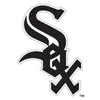
TOP 4th
 White Sox
White Sox Rockies
RockiesTOP 4th
 White Sox
White Sox Rockies
Rockies
TOP 4th
TOP 4th
 White Sox
White Sox Rockies
Rockies
TOP 4th
TOP 4th
 White Sox
White Sox Rockies
Rockies
TOP 4th
TOP 4th
 White Sox
White Sox Rockies
Rockies
TOP 4th
TOP 4th
 White Sox
White Sox Rockies
RockiesFull Schedule
7/6
LIVE
CHSN
7/7
11:30 pm
CHSN
7/8
11:30 pm
CHSN
7/9
6:00 pm
CHSN
7/10
11:30 pm
CHSN
7/12
12:00 am
CHSN
7/12
8:00 pm
CHSN
7/13
6:00 pm
CHSN
7/18
10:30 pm
CHSN
7/19
10:30 pm
CHSN
7/20
5:30 pm
CHSN
7/21
11:30 pm
CHSN
7/22
11:30 pm
CHSN
7/23
11:30 pm
CHSN
7/25
11:30 pm
CHSN
7/26
11:00 pm
CHSN
7/27
6:00 pm
CHSN
7/28
11:30 pm
CHSN
7/29
11:30 pm
CHSN
7/30
6:00 pm
CHSN
8/2
1:30 am
CHSN
8/3
2:00 am
CHSN
8/3
8:00 pm
CHSN
8/6
1:30 am
CHSN
8/7
1:30 am
CHSN
8/7
8:00 pm
CHSN
8/8
11:30 pm
CHSN
8/9
11:00 pm
CHSN
8/10
6:00 pm
CHSN
8/11
11:30 pm
CHSN
8/12
11:30 pm
CHSN
8/13
6:00 pm
CHSN
8/16
12:00 am
CHSN
8/16
11:00 pm
CHSN
8/17
6:00 pm
CHSN
8/18
11:00 pm
CHSN
8/19
11:00 pm
CHSN
8/20
11:00 pm
CHSN
8/22
11:30 pm
CHSN
8/23
11:00 pm
CHSN
8/24
6:00 pm
CHSN
8/25
11:30 pm
CHSN
8/26
11:30 pm
CHSN
8/27
11:30 pm
CHSN
8/28
11:30 pm
CHSN
8/29
11:30 pm
CHSN
8/30
11:00 pm
CHSN
8/31
6:00 pm
CHSN
9/1
6:00 pm
CHSN

